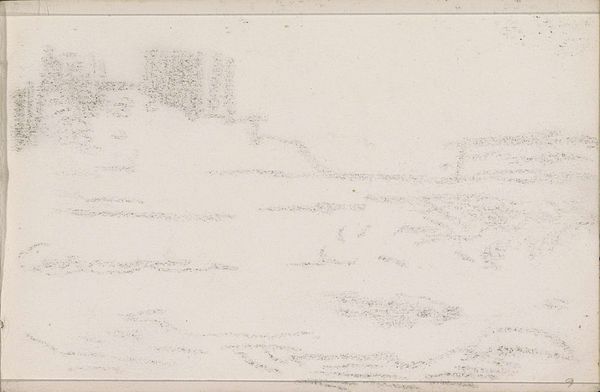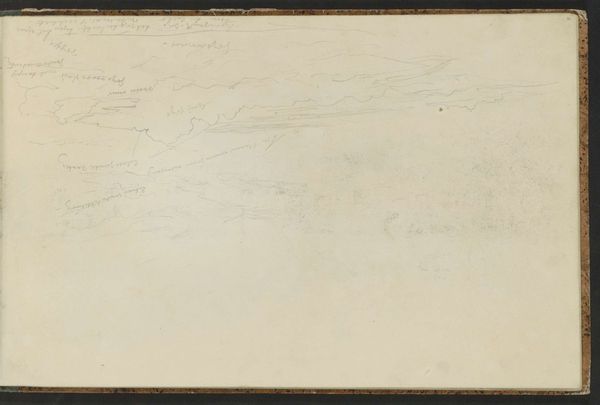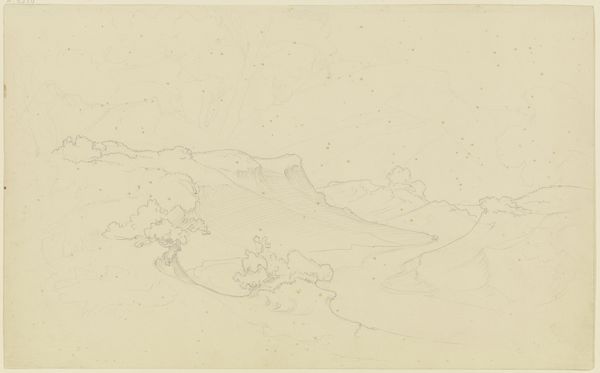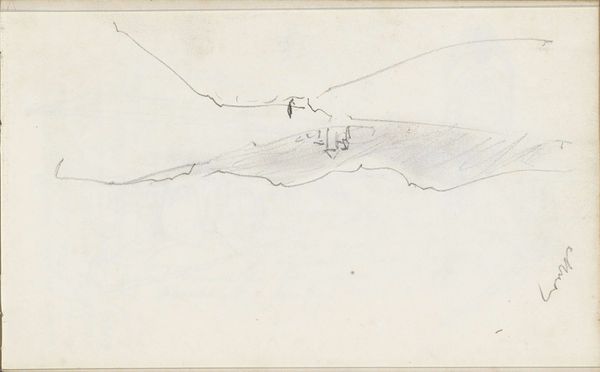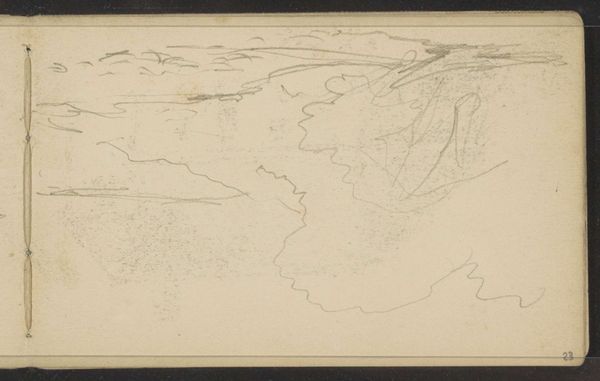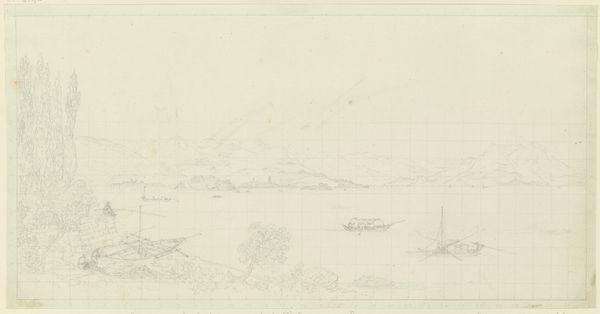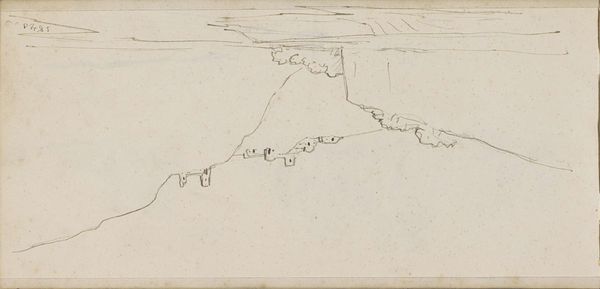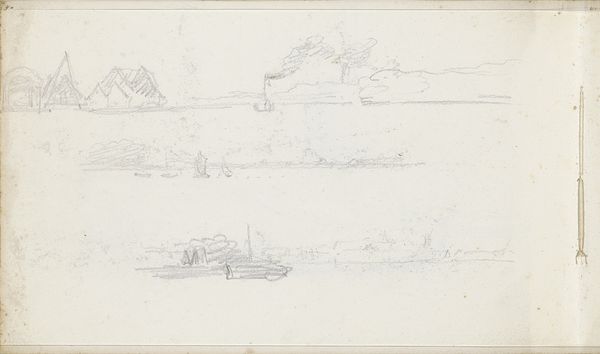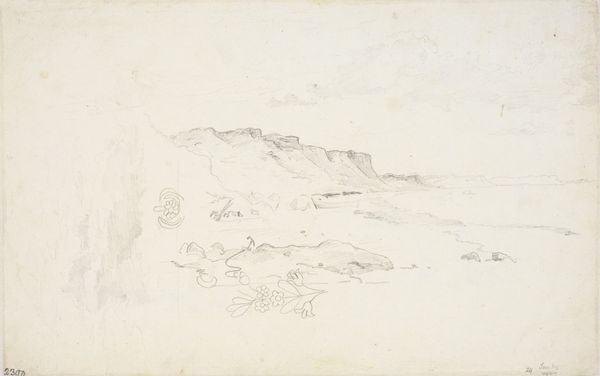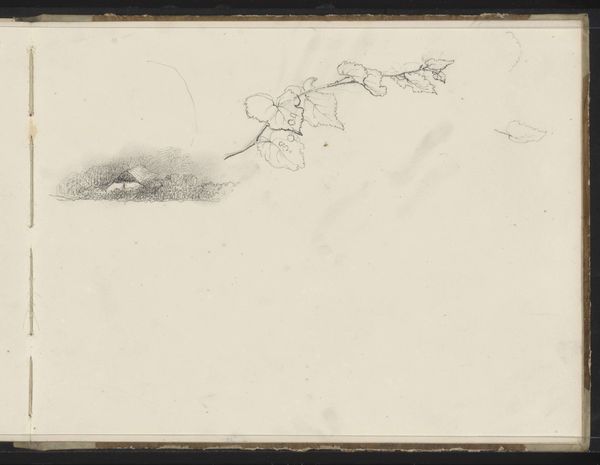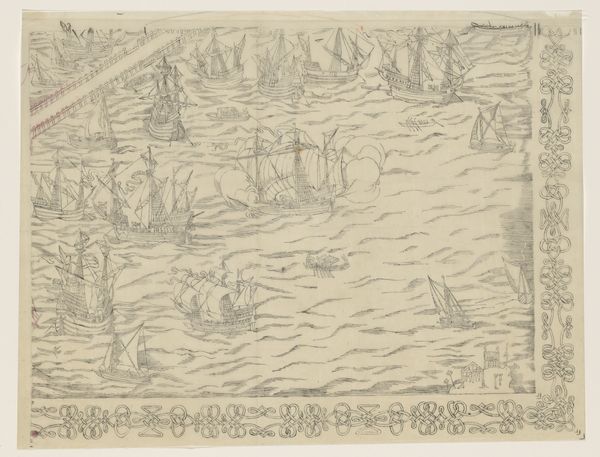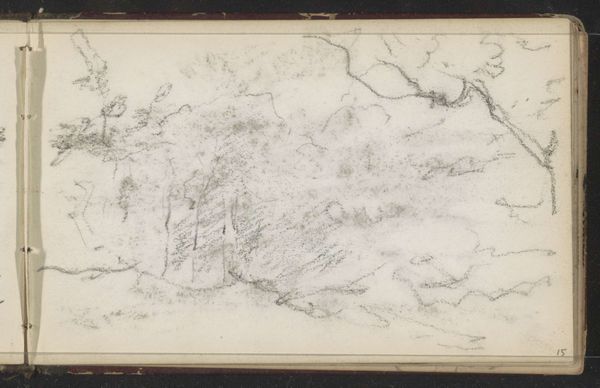
drawing, pencil
#
drawing
#
landscape
#
etching
#
pencil
#
cityscape
#
realism
Copyright: Rijks Museum: Open Domain
Curator: Let’s turn our attention to this understated landscape titled “Chalets aan de voet van een berg,” which translates to “Chalets at the Foot of a Mountain,” believed to have been created sometime between 1865 and 1913 by Bramine Hubrecht. It’s rendered delicately in pencil and etching, now residing in the Rijksmuseum. Editor: My immediate reaction is to note the stark contrast in line weight, a very detailed grouping of architectural constructions hovering above quite loosely sketched mountainscape...almost floating! Curator: Precisely. Consider how Hubrecht orchestrates this composition. We have a horizon implied rather than defined, achieved through the varying densities of lines. It prompts us to consider our perception of depth, especially within the conventions of realistic landscape drawing. Editor: The chalet motif here likely stems from a collective cultural memory associating such structures with idealized rural life, or, even more pointedly, the romantic concepts of 'Switzerland' found across Europe as part of a symbolic imaginary of leisure and freedom. Curator: The almost clinical, detached portrayal avoids direct romanticizing. By neutralizing obvious symbolic markers, it underscores a subtle exploration of spatial relationships—a near geometric articulation, quite ahead of its time. Editor: True, but I find a muted melancholy in its reserve. I think the emptiness in the lower portions could represent the quiet stillness, perhaps even isolation. Perhaps, she reflects our modern anxiety and rootlessness? Curator: That reading highlights how forms affect perception and, I will admit, allows for an interesting dialogue between past, present and anxieties. In that case, the sparseness of line begins to feel intentional, a statement about form. Editor: And maybe how the familiar iconography can act as a bridge connecting history to emotions—drawing us to find deeper resonances within us. Curator: So, perhaps beyond surface observations, it provides a reflective opportunity in an interesting way, no? Editor: Yes, indeed, one feels challenged by the sparse imagery, almost as if beckoning further exploration into cultural implications and, frankly, into the realm of psychological projection, forcing viewers to find their individual emotional interpretations and resonances.
Comments
No comments
Be the first to comment and join the conversation on the ultimate creative platform.

